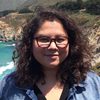Graduate Fellows Exhibition
No End in Sight presents the work and practices of Headlands’ 2016–17 Graduate Fellows. In the spirit of the organization’s history of encouraging artistic exploration and experimentation, this exhibition travels the path of an idea to fruition, taking various routes and perspectives. What happens when we begin to understand an art practice as an evolution rather than a result-oriented endeavor? Whether it be with meticulous research, collection of scientific data, sketches as preparation for acts of chance, the organic development of the handmade, thinking through digital culture via analog devices, or the act of autobiographical documentation, No End in Sight asks fruitful questions rather than presenting final answers.
No End in Sight is curated by Tania Houtzager & Angelica Jardini.
Exhibition on view through Wednesday, June 7.
Gallery hours: Saturday–Sunday, 12–5PM.
Paper Road performance by Nicole Lavelle: Sunday, June 4, 6PM.
Presented in partnership with Embark Gallery, 2 Marina Blvd, #330, San Francisco, CA 94123.
This event is part of our off-site program series while our campus is currently closed to the public for construction on The Commons. We’re thrilled to co-present and collaborate with several Bay Area cultural organizations and partners; see all off-site events here.
About the Graduate Fellowship Program
Headlands’ Graduate Fellowships is a year-long studio program for recent MFA graduates in partnership with esteemed Bay Area academic institutions. Graduate Fellows are given the support of a private studio, public presentation opportunities, and participation in Headlands’ peer-to-peer community of local, national, and international artists.
Curatorial Statement
By Tania Houtzager & Angelica Jardini
In an increasingly commodified art world, No End In Sight aims to refocus our attentions from the product to the process of seven artists who have been thinking through their own practice and its place at the Headlands Center for the Arts. This exhibition reveals how these artists approach problems, think through complex subjects, and eventually decide how best to present their findings and creations to the public. While their results are quite varied, Shannon Abac, Jose Figueroa, Kunlin He, Cy Keener, Nicole Lavelle, Holden Schultz, and Angela Willetts all take us on conceptual journeys through their unique modus operandi.
Inspired by Headlands’ coastal location, the work of Cy Keener and Nicole Lavelle both probe for information from the land and the sea. Keener roots his process in scientific research and the poetic ephemeral. His handmade buoys, launched into the ocean and tracked by GPS, are designed to send measurements of waves and the color of the sky back to his studio. Prototypes, sketches, molds, and photographs show how the artist developed his objects, and how they remain in open-ended progress. Lavelle also utilizes research in her practice, on both cultural and personal levels, to create compelling narratives. Using an old family cabin as a starting point, Lavelle interweaves facets of her own life into an interpretive investigation of land use, housing, culture, and community in Marin County. Her experimental visual essay will turn social practice project as she performs a live lecture in which she guides the audience through the complexities and eccentricities of this site in contemporary California.
Like Keener and Lavelle, Kunlin He and Jose Figueroa use fact-based research to reimagine the historical through a personal lens. Kunlin He focuses on Headlands’ military history, interweaving Chinese folk tales with his findings to question preconceived notions of fixed chronology. The result is a unique amalgam of fact and fiction, presented via traditional Chinese ink painting techniques and contemporary installation. Jose Figueroa similarly explores personal history through autobiographical paintings that act as a vibrant diary, providing insight to the artist’s inner life and thought process. Together, the paintings become a symbolic archive, full of talismans of specific places and times that simultaneously form the basis of a potentially life-long project.
Angela Willetts, Shannon Abac, and Holden Schultz each explore the potentialities of their mediums. Willetts tests the boundaries of objects and subjects in video documentation methods of her performance practice. Through the relationship between her body and various materials, she deconstructs the binary of the self and other, and opens a dialogue with endless possibilities. While her performances originate as dedicated tasks, the act of doing subsumes her original goals. Abac also explicitly presents the effects of working processes in her large sculptural vessels with accompanying maquettes. The elements of chance and risk are clearly rendered, presented as the results of experiments with an array of materials, thus expanding the definition of ceramic art. Schultz disassembles and reconstructs obsolete technology—including projectors, cameras, and scanners—into functional objects, ultimately reimagining the ways that photography might provide new ways of seeing. At its most powerful, Schultz’s work presents a reinvention of image creation through an ingenious hybridity of the old and new. His work, like all of the artists’ works in the exhibition, is dedicated to imagining new paths, connections, and horizons.
